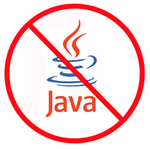Well I have had the pleasure of setting up a KMS server in our environment, and found that the documentation from Microsoft is somewhat confusing. In light of this I will write the steps I used to configure the first KMS server in our organisation for use with Windows Server, Windows client and Microsoft Office activation. These steps will only include the installation of 1 KMS server.
What is GPRESULT and how it helps you
GPRESULT, or otherwise known as Resultant Set of Policy Queries is a tool used to provide client end information of Group Policy settings.
The utility ships with all current versions of Windows and is used to aid administrators in troubleshooting group policy problems. The policy is very similar between all versions of Windows, however Windows Vista and Windows 7 requires elevation.
Remove specific email from ALL mailboxes in Exchange 2010 SP1
Have you ever had the situation where you had to quickly remove an email from all mailboxes in an organisation? Maybe it was an accidental email by an assistant to the whole company, or worse, inappropriate content sent by a disgruntled employee? I have not yet been put in this position but i wanted to be prepared for the gloomy day. This will help you if you are in the same position.
Well here are some steps that i have tested in an Exchange 2010 SP1 environment.
Note: there is a different method for Exchange 2007/2010 RTM versions that has not been documented here.
Who on your network is a Local Admin?
So I wanted an answer to a very simple question. Who on my network has been given Local Admin rights?
We have had requirements in the past where users had to be administrators for whatever reason, usually due to applications not working. Now i want to get a better understanding of who has access so we can try and minimise this (as I find it to be a security risk).
I did some searching around and it looks like i have found the a very simple solution. In short its a simple 2 line script that checks domain users (other than Domain Admins) and saves them in a file called %computername%.txt. It then searches that file for the user names and creates a new file for each user name in a different file called %username%.txt.
GPO: How to redeploy software to an individual machine
So i come across this every now and then where i have a machine that successfully had the software installed, but through an automatic update or user removing it the software needs to be reinstalled. Wouldnt it be great to be able to just push out the GPO to that user again? Well you cant exactly… If you redeploy a GPO software from GPMC it will force a reinstall for everyone. Below are the steps you need to do.
How to view log files in Windows Explorer preview pane
Have you ever had to look at alot of little log files and want to quickly glance at them? Well the easiest way to do this would be to use the Preview Pane in Windows 7 Explorer window. To enable this you need to add the following registry key: [code]Windows Registry Editor Version 5.00 [HKEY_CLASSES_ROOT\.log] … Read more
GAL photos in Exchange 2010
So i started to look into the idea of adding photos of our staff to our GAL and thought I would note down some things i learnt on the way. The first i would suggest is to have a good read to the below 2 URL’s as they have documented quite well what you need to do and how to do it. I will go over the basic steps, and tips i learnt along the way.
GAL Photos in Exchange 2010 and Outlook 2010
http://msexchangeteam.com/archive/2010/03/10/454223.aspx
GAL Photos: Frequently Asked Questions
http://msexchangeteam.com/archive/2010/06/01/455005.aspx
My Comments
The word GAL and Exchange get thrown about a bit so its easy to get confused with where the image is being stored. It actually goes into Active Directory and is stored under thumbnailPhoto field as a hexadecimal. You can upload it a number of ways but i chose to use an Exchange powershell command.
Who hates Java? (how to remove all Java installations on your Network)
My colleague who is rightly paranoid about security has a dislike for the buggy software from Java, so one  day he shoots me off a link to a forum where he found a VB script to remove ALL versions of java from a PC. Fantastic i thought, now we just have to put it in our environment!
day he shoots me off a link to a forum where he found a VB script to remove ALL versions of java from a PC. Fantastic i thought, now we just have to put it in our environment!
Here is the forum from where we got a VB script from:
http://www.appdeploy.com/messageboards/tm.asp?m=29809
So they guys on the forum post did all the hard work, all I did was apply it to our situation. Here is what we wanted to achieve:
- Run the script on every PC (client) in our network – we didnt have alot of users that actually required Java so we decided to remove everything, and only install it (in a managed way) to the users that required it.
- Make sure the whole script did not run EVERY time the PC was turned on.
- Output the log files somewhere centrally so we can monitor the uninstall process.
- Provide a managed Java deployment solution via GroupPolicy